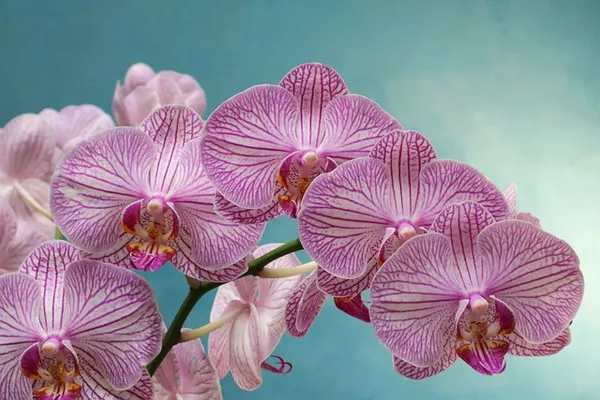Orchids, with their stunning array of colors and intricate blooms, have captivated humans for centuries. Cultivating these delicate flowers can be both rewarding and challenging. With the right knowledge and care, anyone can become a successful orchid grower. In this comprehensive guide, we will delve into the intricacies of orchid cultivation, covering everything from choosing the right species to mastering proper care techniques.
Understanding Orchids: A Diverse and Fascinating Family
Before diving into cultivation techniques, it’s essential to understand the diverse nature of orchids. With over 25,000 species belonging to the Orchidaceae family, orchids come in various shapes, sizes, and colors. From the popular Phalaenopsis to the exotic Cymbidium, each orchid species has its unique requirements and characteristics.
When selecting orchids for cultivation, consider factors such as climate, light conditions, and available space. Some orchids thrive in warm, humid environments, while others prefer cooler temperatures. Additionally, certain species require more sunlight than others, so it’s crucial to match your orchids with the appropriate growing conditions.
Choosing the Right Orchid: Factors to Consider
When embarking on your orchid-growing journey, selecting the right orchid species is paramount to success. Consider the following factors when choosing orchids for cultivation:
1. Climate Compatibility: Different orchid species have specific climate requirements. Determine whether your local climate aligns with the needs of the orchid species you’re considering.
2. Light Requirements: Some orchids thrive in bright, indirect light, while others prefer shaded conditions. Assess the lighting conditions in your growing area to ensure they match the needs of your chosen orchids.
3. Watering Needs: Orchids have varying water requirements depending on their species and growing environment. Research the watering needs of potential orchid species to provide adequate moisture without overwatering.
4. Space Constraints: Consider the space available for orchid cultivation. Some orchids, such as miniature varieties, are well-suited for small spaces like windowsills, while others may require more room to spread out.
5. Blooming Season: Determine when your chosen orchid species typically blooms to ensure you can enjoy their flowers at the desired times of year.
By carefully considering these factors, you can select orchids that are well-suited to your growing conditions and preferences.
Orchid Cultivation: A Step-by-Step Guide
Now that you’ve chosen your orchids, it’s time to dive into the cultivation process. Follow these step-by-step instructions to ensure your orchids thrive:
1. Selecting the Right Growing Medium: Orchids require a well-draining growing medium that provides both stability and aeration for their roots. Common orchid growing mediums include bark, sphagnum moss, and perlite. Choose a medium that suits your orchid species and growing environment.
2. Providing Adequate Light: Most orchids require bright, indirect light to thrive. Place your orchids in a location where they will receive plenty of natural light without being exposed to direct sunlight, which can cause leaf burn.
3. Maintaining Proper Humidity: Orchids are native to tropical regions and thrive in humid environments. To mimic their natural habitat, use a humidity tray or humidifier to maintain humidity levels of around 50-70%.
4. Watering Wisely: Overwatering is one of the most common mistakes made by orchid growers. Water your orchids only when the growing medium is nearly dry, typically every 7-10 days. Avoid getting water on the leaves or crown of the plant, as this can lead to rot and fungal infections.
5. Fertilizing Regularly: Orchids require regular fertilization to support healthy growth and blooming. Use a balanced orchid fertilizer diluted to half strength and apply it every 2-4 weeks during the growing season.
6. Monitoring for Pests and Diseases: Keep a close eye on your orchids for signs of pests such as aphids, scale, or mealybugs, as well as common diseases like root rot and fungal infections. Treat any issues promptly to prevent them from spreading to other plants.
7. Repotting When Necessary: As orchids grow, they may outgrow their pots or become root-bound. Repot your orchids every 1-2 years or as needed, using fresh growing medium and removing any dead or decaying roots.
By following these steps and providing proper care, you can enjoy healthy, vibrant orchids year-round.
Advanced Orchid Care Techniques
For experienced orchid growers looking to take their cultivation skills to the next level, consider incorporating the following advanced care techniques:
1. Temperature Manipulation: Some orchid species require specific temperature fluctuations to initiate blooming. Research the temperature requirements of your orchids and consider manipulating temperatures by adjusting heating or cooling systems.
2. Air Circulation: Proper air circulation is crucial for preventing fungal infections and promoting healthy growth. Use fans or open windows to ensure adequate airflow around your orchids.
3. Root Pruning: Periodically inspect your orchids’ roots and prune any dead or rotting sections. This encourages healthy root growth and prevents issues such as root rot.
4. Specialized Growing Conditions: Certain orchid species, such as high-altitude varieties or those native to cloud forests, may have specialized growing requirements. Create microclimates within your growing space to replicate these conditions as closely as possible.
By incorporating these advanced techniques into your orchid care routine, you can optimize growth and blooming for even the most challenging orchid species.
Conclusion
Growing orchids can be a deeply rewarding hobby, offering beauty, relaxation, and a sense of accomplishment. By understanding the diverse nature of orchids, selecting the right species, and providing proper care, anyone can become a successful orchid grower. Whether you’re a beginner or an experienced enthusiast, use this guide as a roadmap to cultivate thriving orchids and enjoy their stunning blooms for years to come.


